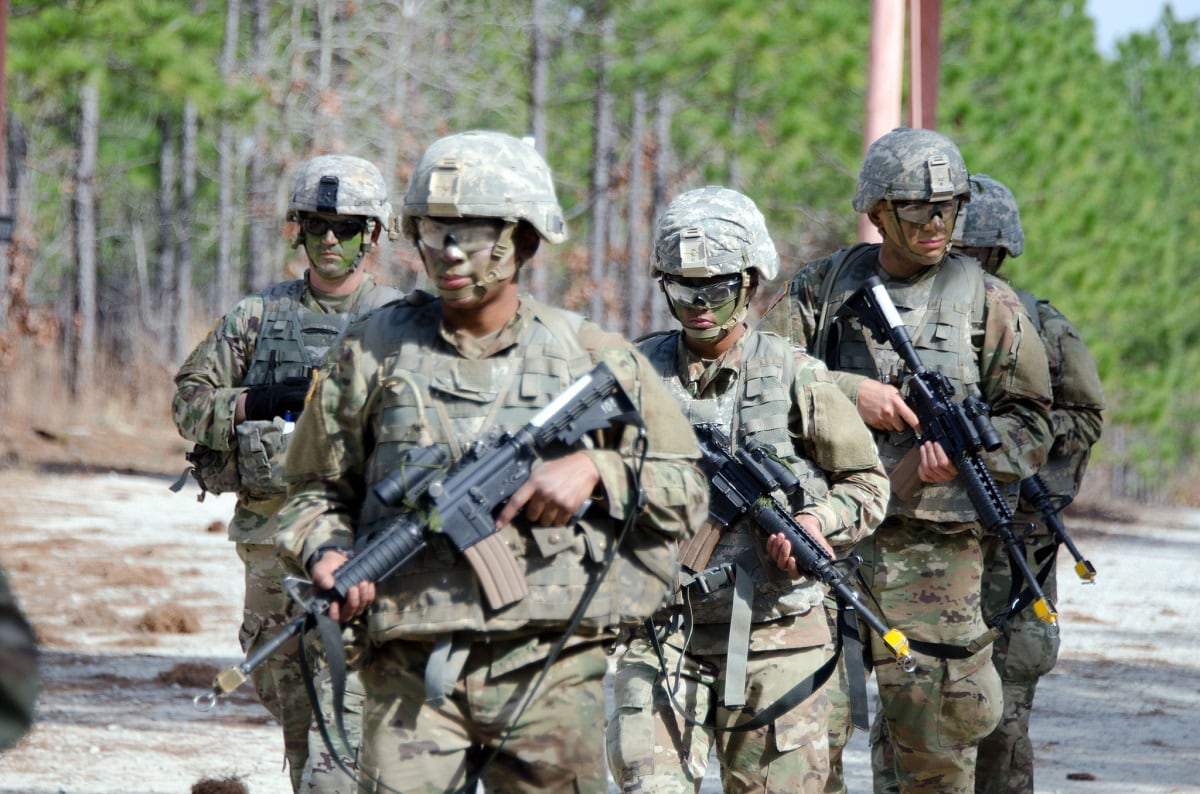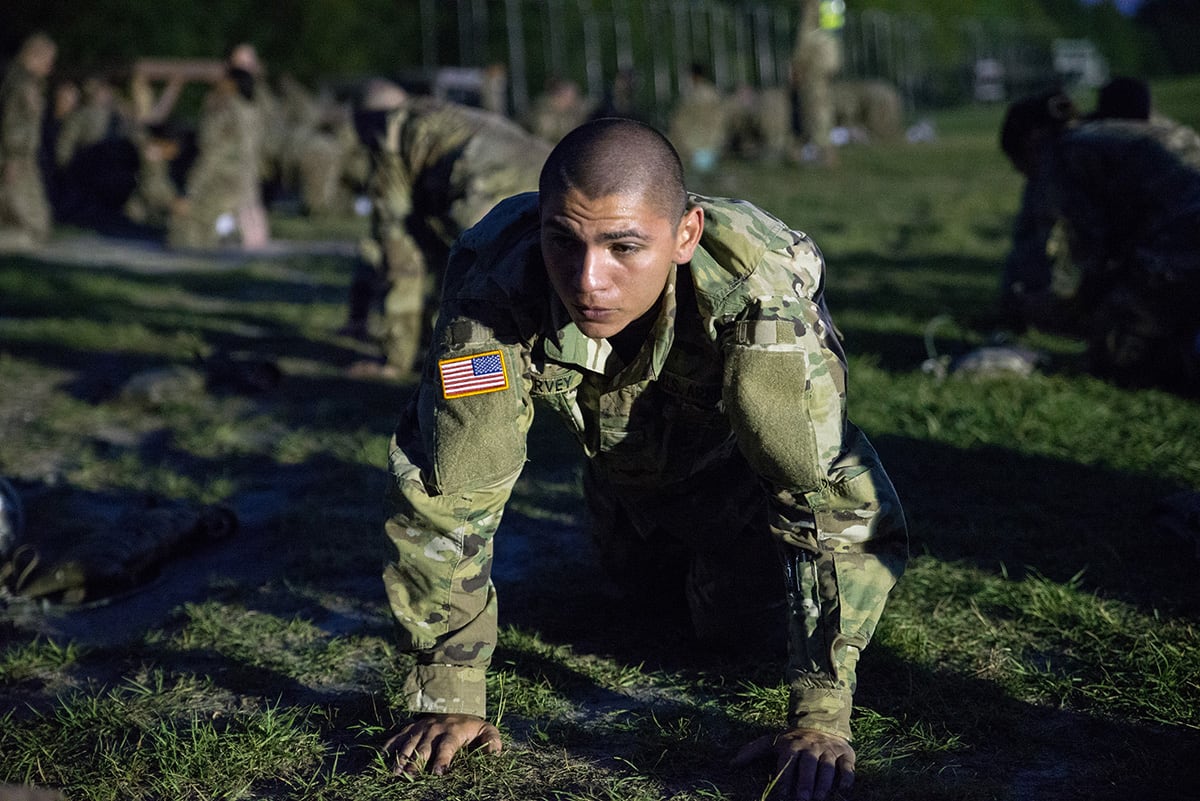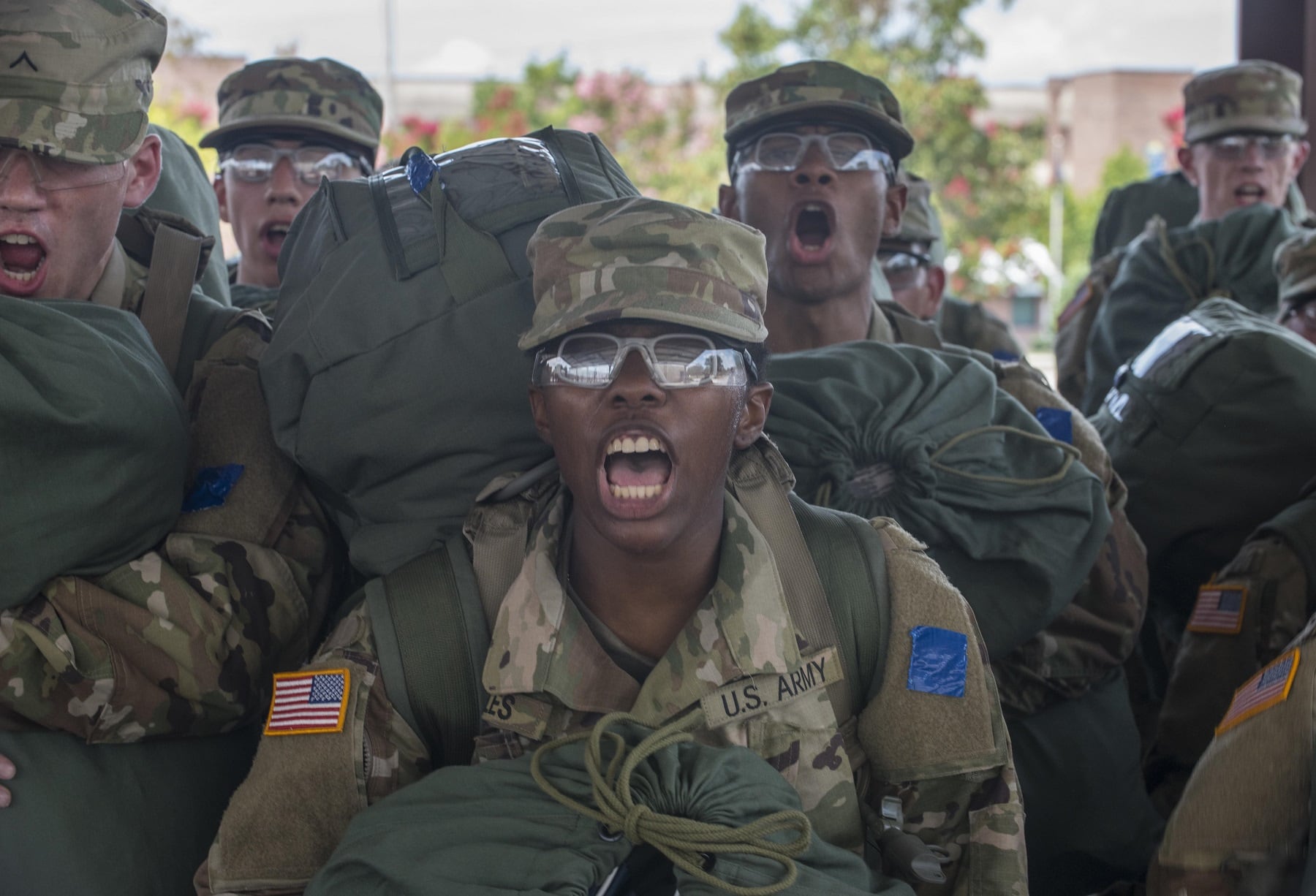FORT SILL, Okla. — “You’re wounded, you can’t move.”
A drill sergeant barks at a young soldier in D Battery, 1st Battalion, 31st Field Artillery in the midst of basic training on a recent Monday morning at Fort Sill. The sun is already high in the air and the humidity has topped 80 percent. There's no breeze in the rugged, overgrown brush of the training area.
The "bird" is set to arrive in 15 minutes and the squad of young soldiers has to make the landing zone with their wounded. Two are disabled and must be strapped down to gurneys and carried. Another is declared "walking wounded," meaning he can walk himself, but will still need medical relief once they reach the chopper. But they have to get there first — carrying their fellow soldiers on stretchers while they battle the heat and keep a look out for the enemy.
RELATED

This is only Day 1 of 96 hours of some of the intense basic training exercises in the Army. The men and women of D Battery are pioneering new and improved tactics, techniques and procedures that will be implemented across all basic combat training units at Fort Sill in October. Dubbed, “Forge,” this new basic training style upends the basic training exercises of the last 20 years in favor of more grueling, more intense and more efficient training designed to ensure soldiers are more mobile and efficient on the battlefield, the Lawton Constitution reported.
“The thing we stress to them is, 'how far can you go?” said Staff Sgt. Michael Davies, drill sergeant. “It’s about physical and mental exhaustion and pushing them to their limits with one strenuous activity after another.”

One of the biggest changes implemented with Forge is making trainees road march with rucksacks, weighing 35 pounds, a total of 25 miles between each training position. The idea is to move the Army from a forward-operating base mindset to a more hasty fighting position. The training will increase their endurance and build their strength — both mentally and physically. The men and women of D battery are the first at Fort Sill to participate in this version of the Forge, as command personnel continue to refine and hone it into a training philosophy that suits this post.
“We’re trying to figure out what works here and what doesn’t,” said Capt. Jedidiah Schlissel. “How does it work best for Fort Sill?”
RELATED

Forge is the seventh week of basic training for the men and women of D Battery. It's the culmination of everything they have learned up to this point and serves as a "crucible" that will serve as their transition from civilian trainee to soldier. But they're going to have to earn that transition and complete the toughest 96 hours of their lives — a four-day period that includes little sleep and around-the-clock exercises in a round robin fashion.
"The operations are continuous overall," Davies said. "Down to the smaller elements, there's always going to be someone doing a mission around the clock."
Soldiers will get around four hours of sleep a night in between exercises. Those exercises include resupply and equipment moves, a mass casualty event, night infiltration course, reflexive-fire live fire, combatives and pugils, navigation of two obstacle courses at night and medical tactical evaluation. Much of the work will be done at night, Schlissel said.
"Aside from today, most of what we will do will be under the cover of night," he said. "Part of that is due to the sun and the heat. At night, the heat is mitigable. Especially here, in the summer, this would be slightly hazardous to do it for the whole day. That's part of figure out what works best here at Fort Sill."
Partaking in the medical tactical evaluation, the soldiers arrive at the landing zone and await the arrival of the choppers. It's a large grassy clearing with trees all around. It's a good site for a chopper to land, but the tree lines surrounding the perimeter make easy covering for an ambush.
"Get out farther," the drill sergeant yelled again. "Get out there and go prone. Don't take a knee. We're going to be here a while."
Sweat poured off the faces of the soldiers — both wounded and uninjured. Private Archibald Thomas, of Olive Branch, Mississippi, is no stranger to the heat and humidity. He doesn't mind the stress. He lies prone in the grass with his M-16 poised in case of an attack. Even in just the first 24 hours of Forge, Thomas said he was pushed to his limits.
"I wasn't sure we would be prepared for this," he said. "I'm feeling well, though. I'm a lot stronger than I thought I would be."
Thomas didn't know what to expect from the Forge because that was by design. Schlissel only told his men they would be starting the Forge portion of their basic training. Beyond that, he left it up to the imaginations of the men and women under his command to determine what that would entail.
"It increases mental toughness within them," he said. "If they knew what we were going to do with this crucible, they would know how tough it would be. We don't tell them what to expect because they would know everything. We don't want them to know what to expect here."
As word of the bird's arrival hits and the first part of the Forge exercise is concluded, Thomas takes a deep breath and a deep drink of water. His skin is bright red and glistens with beads of sweat. He might take solace in the fact that once Forge is complete, the hardest part of basic training will have passed and Davies promises, "it's all downhill from here." But he still has 90 hours to go and Forge is just getting started.
“Forge pushes you to your limits and it stresses you like no other,” he said. “If you’re not prepared, you will fail.”





